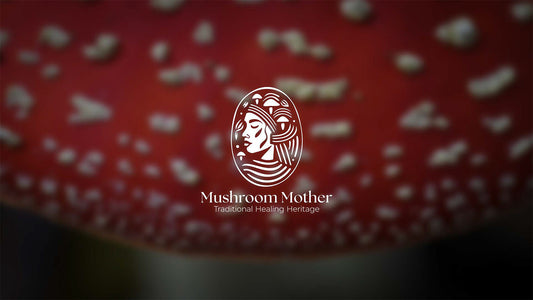There are no products in this collection yet
Return to collection list collections
Name and origin
Amanita Muscaria is renowned for its distinctive red cap with white spots. This beautiful natural creation grows only in the wild and cannot be cultivated in a laboratory setting. The mushroom is elusive and mysterious, often making it difficult for hunters to find. Its unique characteristics set it apart. Its roots trace back to the northern hemisphere's conifer and deciduous forests, where it formed symbiotic relationships with trees, aiding in nutrient exchange.
R. Gordon Wasson, a notable figure in the study of mushrooms, identified Amanita Muscaria as the Soma mentioned in the Rig Veda, worshipped by the early Hindus as a deity. John M. Allegro later claimed that early Christianity and Judaism also revered this mushroom, and the Bible contains numerous mushroom-related word plays, with many biblical names being ancient folk names for this fungus. This mushroom has played significant role in ancient cultures, symbolising fertility, success, health, wealth and happiness.
Types of Amanita Muscaria
Amanita Muscaria species are divided into several varieties, each differing slightly in appearance. These include the classic Amanita Muscaria var. Muscaria with its red cap and white warts, and the less common var. Formosa, characterised by a yellow to orange cap.
Description of Amanita Muscaria and its variability
Amanita Muscaria mushroom is easily recognisable by its bright red cap dotted with white to yellow spots. These spots, remnants of the universal veil that covers the mushroom during its early growth stages, can vary in size and number. The cap ranges from 8 to 20 cm in diameter, beneath which lie white gills. The stem, also white, features a skirt-like ring and is anchored by a bulbous base.
Ecology and distribution
Amanita Muscaria is primarily found in the northern hemisphere, flourishing in both coniferous and deciduous forests. It forms mycorrhizal associations with trees, which are crucial for the nutrient exchange between the fungus and its host. This widespread mushroom is found across Europe (especially in the Ukrainian Carpathians), Asia, and North America, adapting to various climates and elevations.
Similar types
While Amanita Muscaria is distinctive, it can be confused with other species, such as the deadly Amanita Phalloides or the edible Amanita Caesarea.
Application
Ethnographic information on the use
Various cultures have used Amanita Muscaria in religious and spiritual ceremonies for its psychoactive effects. It has played a significant role in the shamanic traditions of some Siberian tribes.
Eating
Consumption of fresh Amanita Muscaria is risky and generally not recommended due to its psychoactive and potentially poisonous compounds. Proper preparation can reduce toxicity, and it should only be done under expert guidance.
Prevention of diseases
Research into the anti-inflammatory and neuroprotective properties of Amanita Muscaria suggests potential applications in disease prevention. The study of Amanita Muscaria's compounds has potential implications for pharmacology, particularly in the development of new drugs and therapies.
Mushroom Mothers' Amanita Muscaria from ecologically clean regions of the Ukrainian Carpathians
For people looking to buy Amanita Muscaria, the Ukrainian Carpathians offer some of the most pristine and ecologically clean specimens. Mushroom Mother specialises in providing high-quality, dried Amanita Muscaria and Amanita Muscaria extract for sale, harvested sustainably from these untouched forests. Our Amanita Muscaria products in powder, in capsules or whole, cater to those seeking both the traditional and contemporary applications of this fascinating mushroom.
Conclusion
In conclusion, Amanita Muscaria's rich history, powerful properties and diverse applications make it a subject of endless fascination. With responsible use and ongoing research, the potential of this iconic mushroom continues to unfold, bridging the gap between ancient wisdom and modern science.

